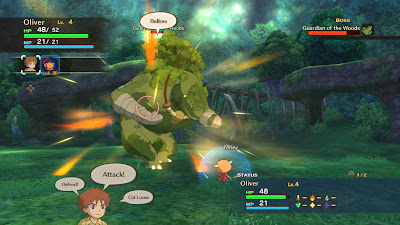The world of
Antichamber is one
of the most imaginative spaces I've ever explored in a game. It
twists in, on, and around itself, like a four-dimensional Moebius
strip. You can turn down a hallway and find yourself walking
endlessly in circles. Doors at the bottom of stairwells lead to the
top of those same stairwells. Walking backwards down a hall might
lead to a different place than walking with your eyes straight ahead.
The whole setting is in a constant state of flux, changing, shifting,
and turning in ways you can never quite wrap your head around.
What makes
Antichamber fascinating
is that it could only be done in a video game. It's about exploring
non-Euclidean space, something which by definition cannot exist in
the real world. The concept has been touched on in other media, most
famously in the (wondrous) works of M.C. Escher, but only in a game
could you actually interact with these kinds of nonexistent
locations.
Hardly any games outside of
Antichamber
have tried to offer this kind of experience.
Silent Hill made
an admirable stab at it in the first game, and a somewhat
half-hearted attempt in the second, but neither developed the
concept in any meaningful way. It was just an arbitrary, confusing
thing that happened in the last level because someone thought it
would be clever, and while it
was, there was always so much
more that could be done with the concept.
What makes
Antichamber great is
that it's
never arbitrary. Every single area has a consistent
internal logic to it. It's always there, just out of reach, begging
you to figure it out every step of the way. It's never obvious, and
trying to comprehend the rules of each area can be bewildering, even
frustrating. But in the end every puzzle is just an invitation to
more thoroughly explore the rules of the system, and then apply those
rules in mind-bending, creative ways.
It only works because the
presentation is so perfect. It's not just the sterile, white walls
and only occasional swaths of color – it's all the non-diegetic
elements as well. Booting up the game leads straight into gameplay,
with only a single preceding logo and no title screen. The credits
are brief, and afterwards it immediately cuts to the desktop. There's
no heads-up display or even a pause
menu. It's true minimalism, the kind which strips away any and all
non-essential elements to expose the systems underneath, and it
compliments the core design of
Antichamber magnificently.
There's not even a story. There's zero narrative justification for
the existence of the antichamber or your presence within it. There's
an eerie dark blob of negative space you occasionally see floating
out of reach, and while it's certainly unsettling, nothing about it
is explained in any way. The gorgeous, ambiguous ending only raises
more questions.
Some may be put off by this absence of a narrative, but I think it
helps the game overall – it lets you appreciate it less like a
movie and more like a painting. There's a weird kind of artistic
conscience to the way the puzzles, the systems, and the presentation
all interact. It's fascinating.
Antichamber is a game I've
wanted for a very long time. Seeing it made with such care and
attention to detail is sheer euphoria.













